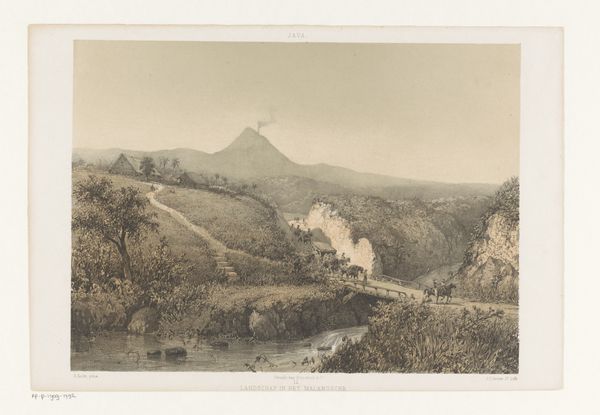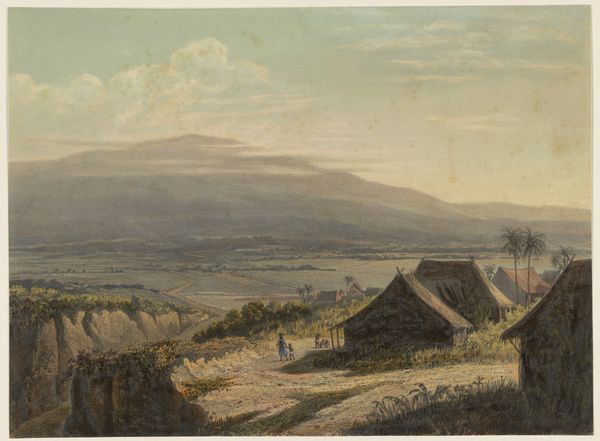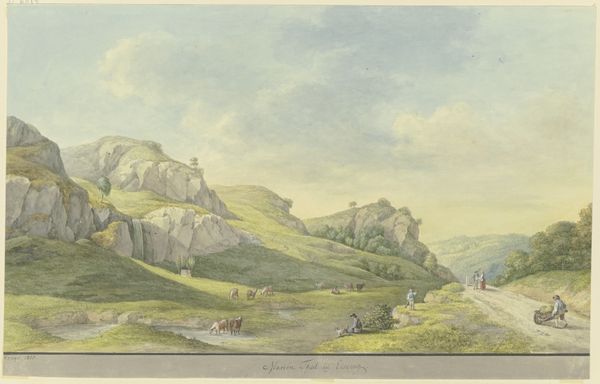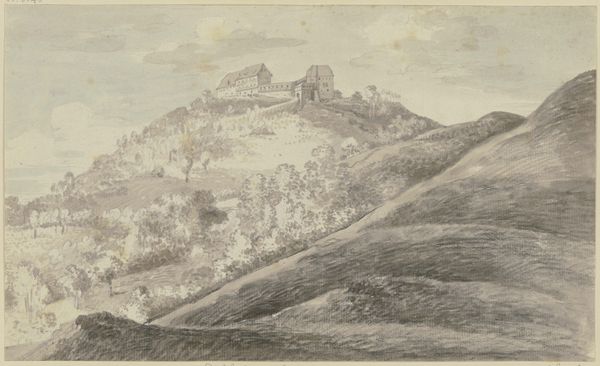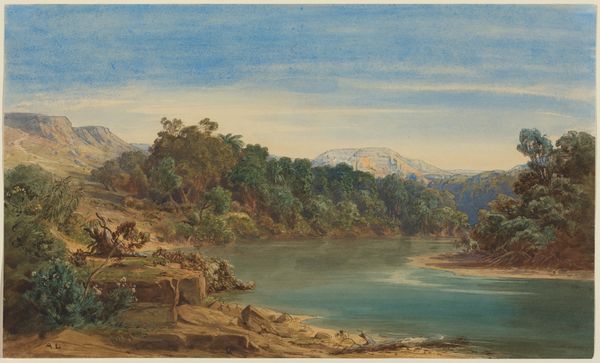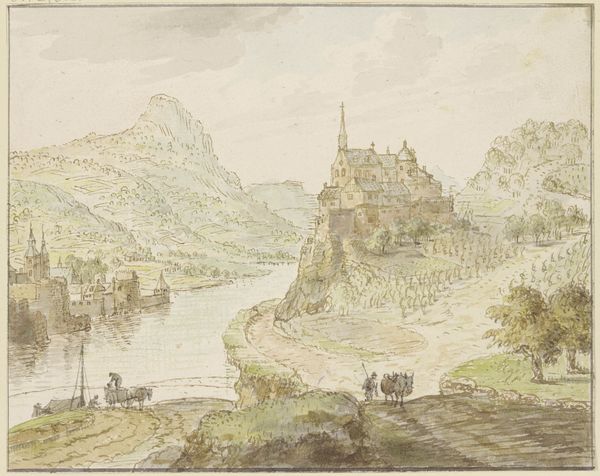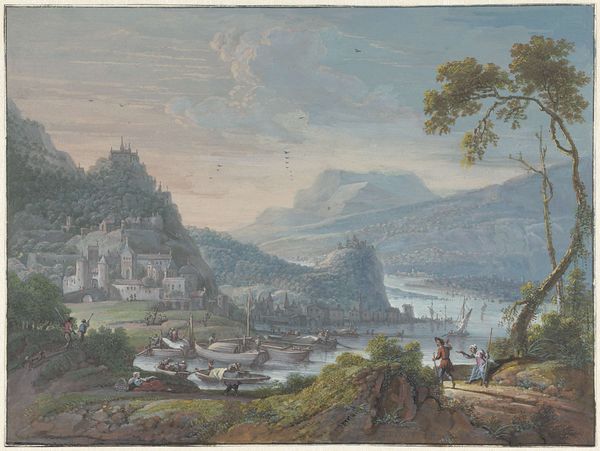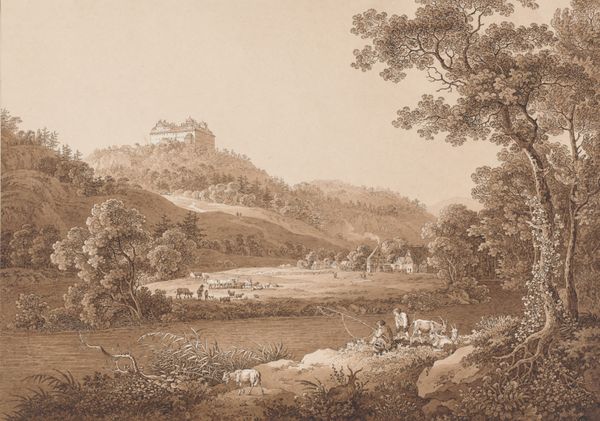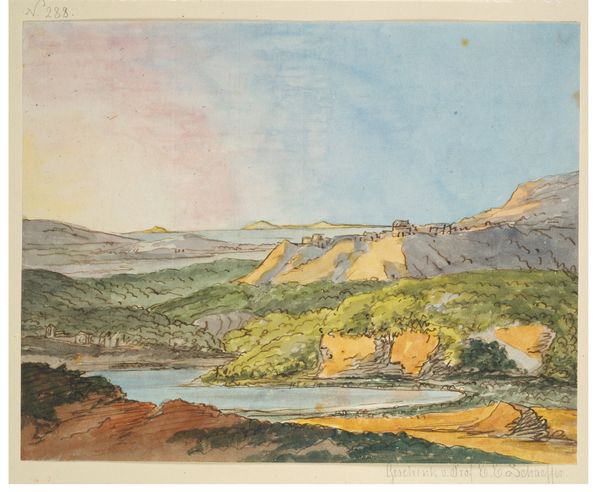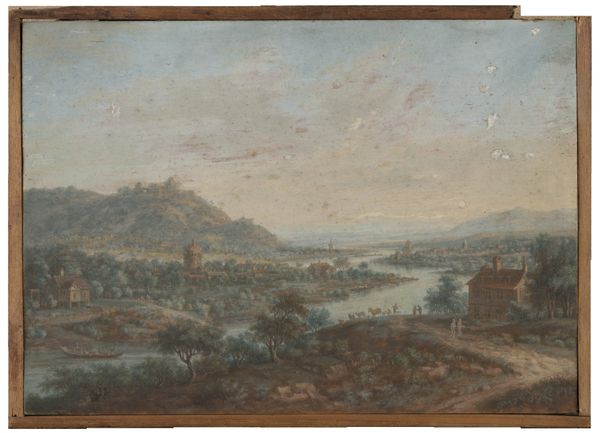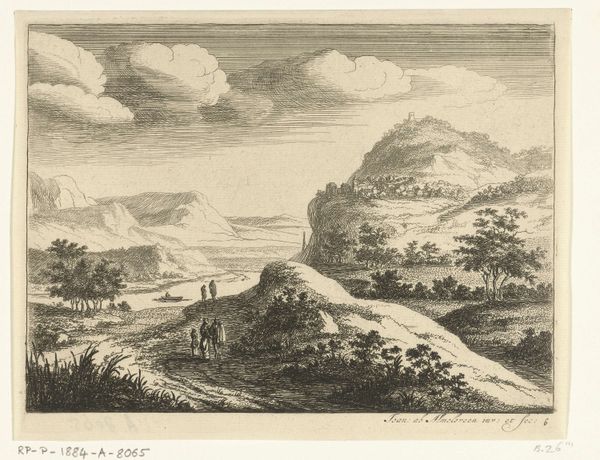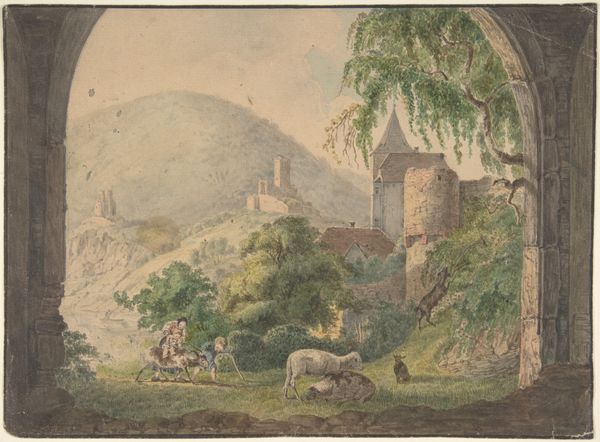
watercolor
#
dutch-golden-age
#
landscape
#
oil painting
#
watercolor
#
orientalism
#
watercolour illustration
#
genre-painting
#
watercolor
Dimensions: height 265 mm, width 363 mm
Copyright: Rijks Museum: Open Domain
Editor: Here we have Johan Conrad Greive's "Gezicht op de omgeving van Malang," a watercolor from 1869. I’m struck by the idyllic beauty, but there's also this distinct feeling of, well, I suppose it’s the dominance of the European gaze. What do you see when you look at this piece? Curator: It's important to contextualize this image within the history of Dutch colonialism in Indonesia. What appears to be a picturesque landscape is, in fact, a carefully constructed representation intended to legitimize and normalize Dutch presence. Consider the title, "View of the surroundings of Malang"— it positions the Dutch as viewers, as owners, of this landscape. Editor: So, it's not just a landscape; it’s a statement of ownership? Curator: Precisely. The meticulous detail, the idealized rendering, even the very act of depicting the region in watercolor—a traditionally European medium—all contribute to a sense of Dutch control and authority. Notice how the figures seem almost incidental, placed to give scale rather than to tell their own story. What does that tell you? Editor: It's like they're part of the scenery, not active participants. The painting almost erases the local population's agency by presenting the landscape as passively waiting to be "discovered" and governed. Curator: Exactly! This form of Orientalism perpetuates power dynamics and reinforces colonial narratives. The painting functioned within a specific art market in the Netherlands, shaping public perception and fostering support for the colonial project. We need to be critically aware of how art can be used to justify and perpetuate these power structures. Editor: This really changes how I see it. It’s no longer just a pretty picture but a document of colonial power. I'll definitely keep that in mind looking at other landscape paintings of the period. Curator: And that understanding is key to viewing art as part of a broader social and political context. Hopefully, that will guide your future interpretations.
Comments
No comments
Be the first to comment and join the conversation on the ultimate creative platform.
